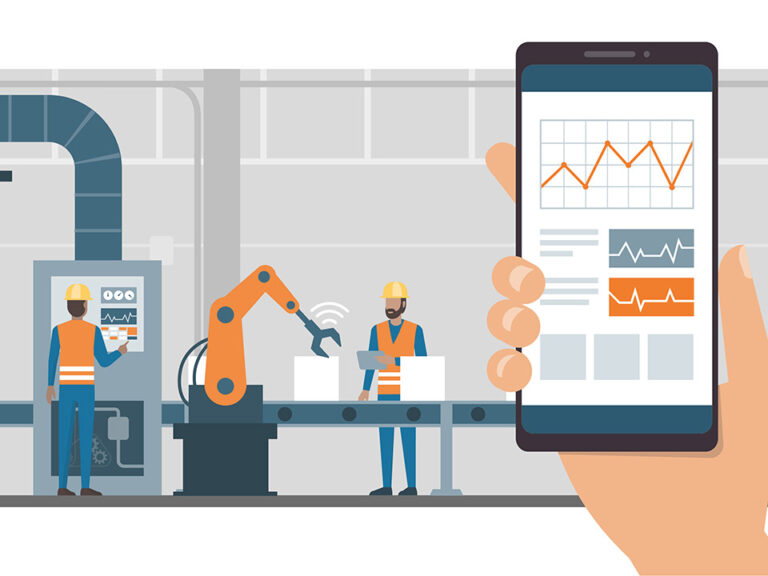Businesses have endured unprecedented times.
Unfamiliar events like the global health crisis, the effects of climate change, and fallout from geopolitical events are disrupting business operations in multiple ways.
In this unpredictable business environment, enterprise leaders are increasing their automation investments—with robotic process automation (RPA) at the center.
The goal? To fully deliver on automation’s potential to drive efficiency, agility, digital transformation, and revenue.
Usage of RPA has soared from 2015—when only 13% of business leaders had plans to invest in the technology—to 2020 when 78% of businesses had already implemented RPA. That number is expected to reach 93% by 2023.
Interested in joining their ranks?
This guide covers everything you need to know about RPA, its benefits, use cases, and what to consider before integrating it into your business operations.
WHAT IS ROBOTIC PROCESS AUTOMATION?
Robotic process automation, or RPA, is a technology that uses software robots or “bots” to perform repetitive tasks with little to no human intervention. Software bots simulate a human user’s work, executing rote, rules-based tasks across a wide range of business processes in your legacy systems and enterprise applications.
RPA differs from traditional automation—which works best when moving volumes of data between systems and relies on creating solutions, writing lots of code, and third-party tools to solve business challenges.
RPA deploys scripts that mimic the user interface path your human workforce uses to perform routine tasks involving structured data.
These digital robots don’t replace your software. Instead, they sit on top of your existing infrastructure and technology, interacting with business applications and systems just like your employees do—except bots are faster, work nonstop, at less cost, and with 100% accuracy and reliability.
For instance, bots can copy and paste data into a spreadsheet, fill out forms, or open and move files without employee involvement.
Somewhat surprising is that some organizations—particularly those that already automate their processes—confuse RPA and Artificial Intelligence (AI). While they’re distinct and co-evolving technologies, they complement each other, creating a more accurate, efficient, and intelligent robotic process automation that drives output at scale.
In a production environment, for instance, AI-powered bots can analyze and select vendors, gather and analyze data, and compare vendors based on their experience, pricing, and reliability.
THE BENEFITS OF RPA IMPLEMENTATIONS
To succeed in today’s economy, organizations need to maximize productivity while reducing operational costs and, ultimately, operate with increased efficiency.
Automation offers many significant benefits that can help you get ahead. The following details what RPA can bring to your business:
- Higher productivity
- Better efficiency with fewer or no errors
- Improved employee engagement
- No disruption of existing systems or applications
- Scales with your business
- Rapid return on investment (ROI)
- Minimal initial/upfront spend
- Save time and operational costs
- Make processes lean
- Reduce go-to-market time
- Maintain an audit trail
- Drive product innovation
- Easier data retrieval and access
- Better compliance
RPA’S WIDE RANGE OF USE CASES
Put bots anywhere, and they’ll be up and running within minutes, taking on any repetitive, manual tasks.
From recruitment to onboarding to invoice processing to prescription management, you can implement RPA in a wide range of use cases, depending on your industry. Some common business applications include:
- Human Resources: Software bots automate and execute HR processes such as recruitment, hiring, and onboarding, which involve a lot of standardization and information management across many digital systems.
- Financial Services: Lenders and other financial service providers use RPA to automate rule-based operations requiring speed and high accuracy. These include account opening, customer inquiry processing, Know Your Customer (KYC) research, reconciliation, report generation, anti-money laundering (AML), regulatory compliance, and more.
- Retail: RPA helps manage inventory, supply chain operations, warehouse order management, customer service and feedback, and returns processing, among other processes in the modern retail industry. This improves employee productivity and customer support.
- Insurance: Multiple repetitive processes in the insurance industry, including claims processing, underwriting, policy management, and regulatory compliance, can be automated, leading to speed, efficiency, and better customer experiences.
- Information Technology: RPA provides capabilities that automate process flows and data at granular levels for better information-sharing and communication between systems. It also creates a virtual workforce (bots), which augments IT skills, making your team’s capabilities more multifaceted and your business more efficient.
- Telecommunications: Businesses in the telecom industry experience massive, tech-driven growth. RPA can help streamline infrastructure and data-sharing in your company’s applications and infrastructure, manage customer record-keeping, and ensure regulatory compliance, among other tasks.
- Manufacturing: RPA optimizes the core manufacturing operations for improved speed, agility, and quality. Learn more in our Beginner’s Guide to RPA for Manufacturing.
- Healthcare and Life Sciences: Healthcare and life sciences professionals rely on accuracy and compliance to deliver quality services to patients whose health and welfare depend on them. RPA streamlines information management and other processes, reducing errors and improving the patient experience.
- Supply chain: Companies can use RPA to integrate information across operation managers and shippers within supply chain operations. Automation improves order processing and management, procurement, inventory management, shipping and logistics, warehouse management, and supply and demand planning.
- Legal and Compliance: RPA handles mundane tasks that legal and compliance teams spend too much time on, such as research, database lookups, and other documentation. This frees them up to provide better legal advice and advocacy.
WHAT PROCESSES FIT RPA?
The automation journey is remarkably simple, but it helps to review and determine the administrative tasks suitable for automation that lead to improved ROI. This way, you can tell whether it’s wise to continue performing the task manually or consider an enhanced automation solution.
Typically, RPA-ready tasks exhibit the following key characteristics:
- Rules-based: RPA bots follow well-defined, unambiguous process rules with template-driven or clear processing instructions in the “If X then Y” format. For example, tasks like copying and pasting or calculations.
- Repetitive: The more a business process is repeated, the more likely it should be automated. Simple, consistent, and repeatable tasks are more suitable for RPA than one-off or custom processes with minimal repetition, which are low-priority automation candidates.
- High-volume, high frequency: RPA works well for simple tasks or processes that operate in high frequency and volume and require accuracy and strict adherence to regulations.
- Stable and standardized: Well-documented, predictable, and stable tasks based on standardized, predictive rules are suitable for RPA.
- Handled manually, time-consuming, error-prone: Repetitive low-skill tasks like cutting-and-pasting, which are prone to human error, should also be automated to save time and improve customer and worker experiences.
- Highly organized with structured data and inputs: RPA automates tasks that rely on structured digital data.
- Low exception: RPA lessens the need for human intervention to repetitive, rote tasks and processes, meaning the process should require limited exception handling if it’s to be automated.
- High ROI potential: Processes that can provide savings in terms of time, money, and work are suitable candidates for RPA.
- Works with readable inputs: RPA also works in processes with standard and consistent readable electronic input like Word, Excel, PowerPoint, email, readable PDF, and more, compared to scanned images that aren’t readable or lack optical character recognition (OCR).
- Already/Difficult to outsource: Processes like invoice processing, which are difficult to outsource or you’re already outsourcing, can be automated for faster output and service delivery.
- Complex and scenario-based: Automate processes that cannot be changed based on underlying technical system architecture in the short term and are based on specific scenarios.
Some tasks may have one or more of these characteristics but would need a process redesign or additional data capture capabilities to make them fully digital and RPA-ready.
KEY CONSIDERATIONS TO GET STARTED WITH RPA
Getting started with RPA is a long-term journey of creating operational and cultural business changes. It starts with identifying the right partner, tools, and suitable business processes to automate.
But RPA tools aren’t the same, and neither are their respective vendors. Depending on your goals, you might need basic RPA or advanced automation tools.
Here are some of the key factors to consider as you prepare to implement an RPA solution:
1. YOUR CURRENT PAIN POINTS
Find out the current challenges in your business that aren’t being resolved.
A good example is when invoices are difficult to process, prone to errors, or take time to complete, leading to customer complaints. Or maybe you’re not getting enough commitment from management to resolve such issues.
All these are pain points that compel you to want to automate your processes.
2. FUTURE-FOCUSED BUSINESS STRATEGY
You may not be struggling with challenges in your business processes but just want to begin your digital transformation journey.
RPA becomes critical to transforming your business processes and creating an organization powered by automation.
3. PRIORITIZATION OF PROCESSES
The next consideration is what to look for when you’re ready to implement RPA.
Prioritize processes that exhibit the characteristics of RPA-ready tasks and that lead to a better ROI for your business.
“The best ROI may not always be the best fit for automation. Consider processes that deliver high ROI and are tied to your pain points.” —Dee Shawn, Leaniar VP for Delivery.
For instance, it may be difficult to automate quality processes because of its many variables, even though it may increase your customer base. It’s important but non-quantifiable.
4. POST-IMPLEMENTATION MONITORING AND EVALUATION
At this stage, your RPA implementation team will monitor and check bots for their effectiveness and any exceptions. This way, you can quickly take corrective actions to retrace and remediate issues that result from malicious code or bot errors by fixing and configuring the bots.
You can use a multilayer approach that includes activities like:
- Reviewing audit logs for validity and appropriateness of bot actions
- Annually reviewing automation algorithms to ensure they’re aligned to defined objectives
- Maintaining a comprehensive to ensure adherence to regulatory compliance requirements
5. CHOOSE AN EXPERIENCED RPA IMPLEMENTATION PARTNER
Consider which type of RPA implementation partner you’re looking for.
If you’re not sure which automation partner to work with, approach your selection as you would any other sourcing procurement or strategic technology.
Ideally, the RPA partner you choose should:
- Be RPA-certified and comply with RPA, industry regulations, and good documentation practices
- Understand your existing legacy systems and applications
- Show proof of expertise and experience in different industries with successful RPA implementation case studies
- Be adaptable to your company’s future automation needs
- Provide a variety of integration options and pricing models that align
POWER YOUR DIGITAL TRANSFORMATION FOR BETTER IMPACT
Automation is coming to its own as an essential technology for enterprises. Yet many organizations still jump in with significant blind spots in their existing systems.
Leaniar can help you jumpstart and scale your RPA journey.
Our RPA experts partner with you to identify your bottlenecks, target where automation will most benefit your business, and transform your industry-specific processes.
Get in touch with us to find out how to kickstart your automation journey and reap the RPA benefits.






